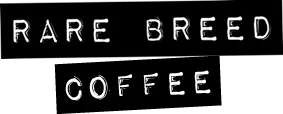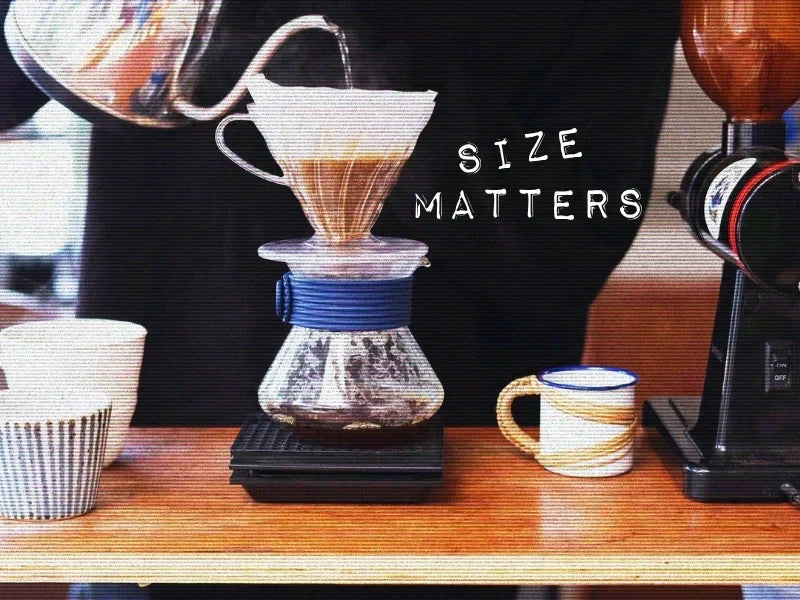The Grind Truth: Why Coffee Particle Size Matters
Ever wonder why your home-brewed cup sometimes tastes amazing, and other times... well, not so much? It might not just be your beans or your brewing skills. Often, the unsung hero (or villain) of your coffee experience is the coffee grind size. That's right, how fine or coarse your coffee particles are can make or break your morning ritual.
You see, brewing coffee is all about extraction – getting those delicious flavors and aromas out of the coffee grounds and into your cup. And the size of those tiny coffee bits plays a massive role in how efficiently that extraction happens. Think of it like this: if you're trying to dissolve sugar, a fine powder dissolves much faster than a large lump, right? Coffee works similarly!
Why the Perfect Grind Matters (It's All About Contact!)
The main reason matching your grind size to your brew method is so crucial is surface area and contact time.
- Surface Area: When you grind coffee, you increase its surface area. The finer the grind, the more surface area is exposed to the water. This allows for quicker and more efficient extraction of coffee solubles (the good stuff that gives your coffee flavor).
- Contact Time: Different brewing methods involve different amounts of time that the coffee grounds are in contact with hot water. A method like espresso has very short contact time, while cold brew has hours.
If your grind size isn't right for the contact time of your brew method, you'll end up with coffee that's either under-extracted or over-extracted, and neither is a delightful experience.
When Your Grind is Too Coarse: The Under-Extracted Blues
Imagine using big, chunky coffee grounds for a quick pour-over. The water rushes through, barely getting a chance to interact with the coffee. This is what happens when your coffee grind is too coarse for your chosen brew method.
- What happens: The water doesn't have enough time or surface area to extract all the desirable flavors. It's like trying to get flavor from a whole coffee bean – it just won't work well!
- How it tastes: Your coffee will likely taste sour, weak, watery, thin, or even salty. It might lack body and have a quick, unpleasant finish. You're missing out on the full potential of your coffee beans.
- Common culprits: Often seen with drip coffee, pour over, or espresso if the grind is too coarse.
- When Your Grind is Too Fine: The Over-Extracted Agony
On the flip side, what if you use super fine, almost powdery coffee for a French press, where the coffee steeps for several minutes? The water will have too much contact with too much surface area. This is the result of a coffee grind that's too fine.
-
What happens: The water extracts too many compounds, including the less desirable bitter ones. It's like squeezing every last drop out of a tea bag, even the harsh flavors.
-
How it tastes: Your coffee will often be bitter, astringent (drying sensation in your mouth), hollow, or taste burnt. It can also be sludgy or murky, particularly in brew methods where the coffee isn't fully filtered.
-
Common culprits: Frequently an issue with French press or cold brew if the grind is too fine, and certainly with espresso if it's choking the machine.
The Roast Level Riddle: Why Darker Beans Grind Differently
Now, here's a curveball you might not have considered: the roast level of your coffee beans actually impacts how you should grind them! It's not just about light vs. dark flavor profiles; it's about the physical structure of the bean.
Think about popcorn. Unpopped kernels are dense and hard. Once popped, they're larger, lighter, and more fragile. Coffee beans undergo a similar transformation during roasting.
- Lighter Roasts: These beans are denser and harder because they haven't been roasted as long. They require more effort from your grinder and tend to produce a more uniform grind with fewer "fines" (super tiny particles). Because they're denser, they're generally harder to extract from. This often means you might need to grind them slightly finer than you would a darker roast for the same brew method to ensure proper extraction.
- Darker Roasts: These beans have been roasted longer, meaning they've expanded more and are less dense, more porous, and more brittle. They're easier to grind and tend to produce more fines. Because they're more porous and fragile, they are easier to extract from. If you grind them too fine, you'll quickly over-extract them. This usually means you'll want to grind slightly coarser than you would a lighter roast for the same brew method.
So, if you switch from a light roast to a dark roast (or vice versa) without adjusting your grinder, you might notice your coffee tasting off! It's a subtle but important tweak in your coffee brewing process.
Your Grind Size Cheat Sheet for Popular Brew Methods

So, how do you get it right? Here are some general coffee grind size guidelines for popular brewing methods. Remember, these are starting points, and you might need to adjust slightly based on your specific grinder, coffee, and personal taste – and now, your roast level!
-
French Press (Coarse Grind):
-
Particle size: Resembles coarse sea salt or breadcrumbs.
-
Why: French presses involve a long immersion time. A coarse grind prevents over-extraction and ensures a clean cup without excessive sediment. This is key for a great French press coffee.
-
Particle size: Resembles coarse sea salt or breadcrumbs.
-
Cold Brew (Extra Coarse Grind):
- Particle size: Very large, chunky particles, like cracked peppercorns or coarse breadcrumbs.
-
Why: Cold brew uses cold water and extremely long steeping times (12-24 hours). An extra coarse grind is essential to prevent severe over-extraction and bitterness. Perfect for rich, smooth cold brew coffee.
-
Drip Coffee (Medium Grind):
- Particle size: Similar to regular table salt or sand.
-
Why: Drip coffee makers have a moderate contact time. A medium grind allows for balanced extraction and a consistent flow rate. This is your go-to for everyday drip coffee.
-
Pour Over (Medium-Fine Grind):
- Particle size: Finer than drip, resembling table salt, but not as fine as espresso.
-
Why: Pour-over methods are often quicker than drip, and the water flows through the grounds with specific pouring techniques. A medium-fine grind provides enough surface area for efficient extraction within the shorter contact time. Master your pour over coffee with this grind.
-
Espresso (Very Fine Grind):
- Particle size: Extremely fine, like powdered sugar or flour. When rubbed between your fingers, it should feel powdery, not gritty.
- Why: Espresso relies on high pressure and very short contact time (25-30 seconds). A very fine grind is absolutely essential to create enough resistance for the water and extract the concentrated flavors characteristic of espresso coffee. This is where dialing in espresso shots becomes an art!
Happy Grinding, Happy Brewing!

Ultimately, the best coffee grind is the one that tastes best to you. Don't be afraid to experiment! Start with these guidelines, taste your coffee, and then make small adjustments to your grind setting. Keep a little coffee journal to track your results. With a bit of practice, you'll be a coffee brewing pro, consistently pulling perfect shots and brewing delicious cups every time. So go forth, grind wisely, and enjoy every sip of your perfectly extracted specialty coffee!

